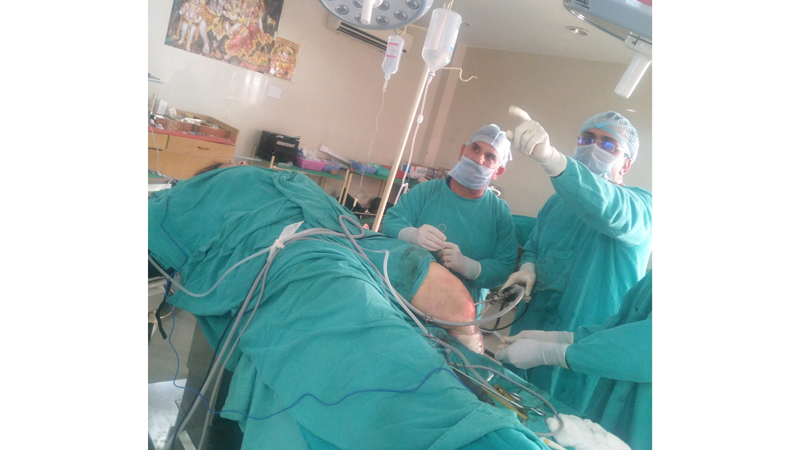NEW DELHI, Jan 27: Experts have advocated for widespread adoption of minimally invasive neurosurgeries as a transformative approach to achieving shorter hospital stays and thus redefining the landscape of neurosurgical care.
Recent data highlights a staggering 50 per cent reduction in hospitalisation durations, emphasising the significant impact of minimally invasive neurosurgeries on the recovery process for neuro patients.
The landscape of brain tumour surgery has undergone a radical transformation, with cutting-edge techniques demolishing once-insurmountable barriers, breathing hope into countless patients and rewriting the narrative of their prognosis, doctors said.
Dr Manish Vaish, Senior Director of Neurosurgery at Max Super Speciality Hospital, Vaishali, said in this era of relentless pursuit against brain tumours, a new dawn has emerged, marked by groundbreaking approaches that leverage data-driven transformations and surgical marvels once deemed impossible.
“At the forefront of this medical renaissance are keyhole surgeries and robotic-assisted procedures, where surgeons, akin to maestros, conduct complex operations through dime-sized incisions, guided by pulsating 3D brain maps on hi-tech screens. This not only minimizes trauma but also accelerates recovery times, offering a paradigm shift in neurosurgical outcomes,” he said.
These minimally invasive techniques represent a quantum leap in our ability to treat previously inoperable tumours, he said.
“With up to 50 per cent of all procedures now being minimally invasive, compared to just 10 pc a decade ago, we see patients experiencing less pain, recovering faster, and regaining functionality more swiftly. This marks a paradigm shift in neurosurgical outcomes,” Dr Vaish stated.
According to experts, fluorescence-guided surgery, employing tumour-illuminating dyes, and focused ultrasound technology are adding newfound precision to the fight against brain tumours.
Dr Yashpal Singh Bundela, Senior Consultant at Sushrut Brain and Spine, Delhi, said “Advancements in fluorescence-guided surgery and focused ultrasound, boasting a 98 per cent success rate in completely removing gliomas, are akin to wielding a surgical laser. We’re not just removing tumours; we’re targeting them with unprecedented accuracy. These techniques are minimizing collateral damage and improving overall patient outcomes.”
The spotlight also falls on the pioneering advancements of intraoperative brain mapping, where surgeons decipher the delicate language of the brain in real-time, preserving vital functions while meticulously excising tumours. Visualize real-time brain activation maps guiding the surgeon’s scalpel like a maestro’s baton.
“Our ability to map the brain in real-time during surgery allows us to navigate with unparalleled precision. Patients undergoing minimally invasive surgery now experience a 50 per cent reduction in hospital stay compared to traditional craniotomies. It’s like conducting a symphony, ensuring that every movement preserves the harmony of the brain’s functions while addressing the threat of tumours,” Dr Bundela added. (PTI)
Trending Now
E-Paper


